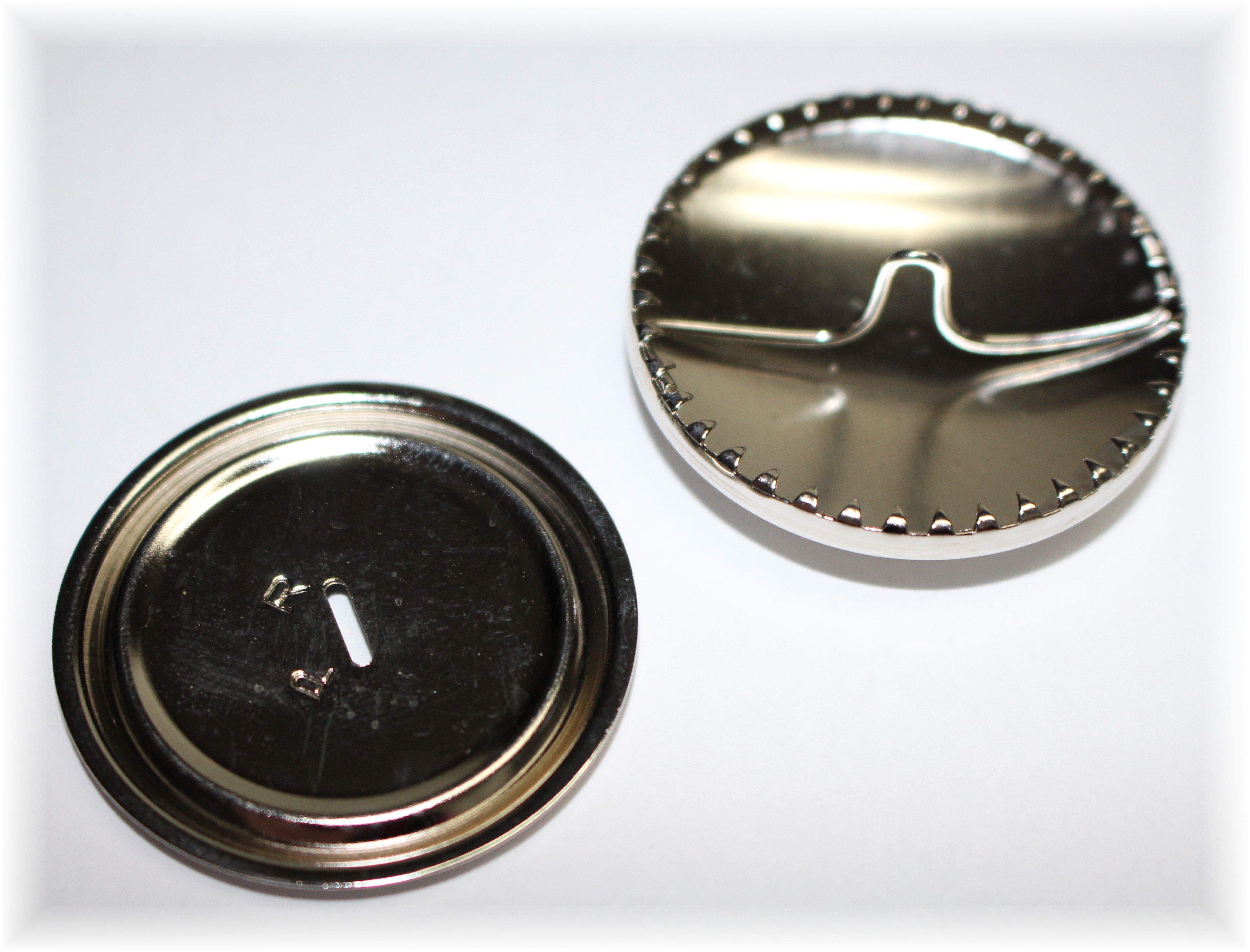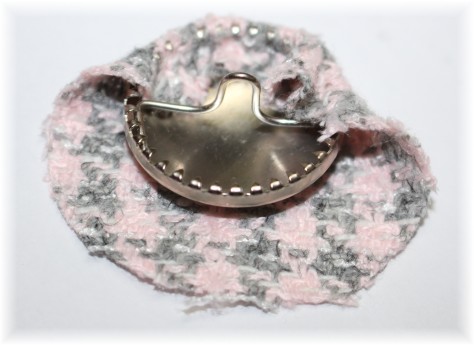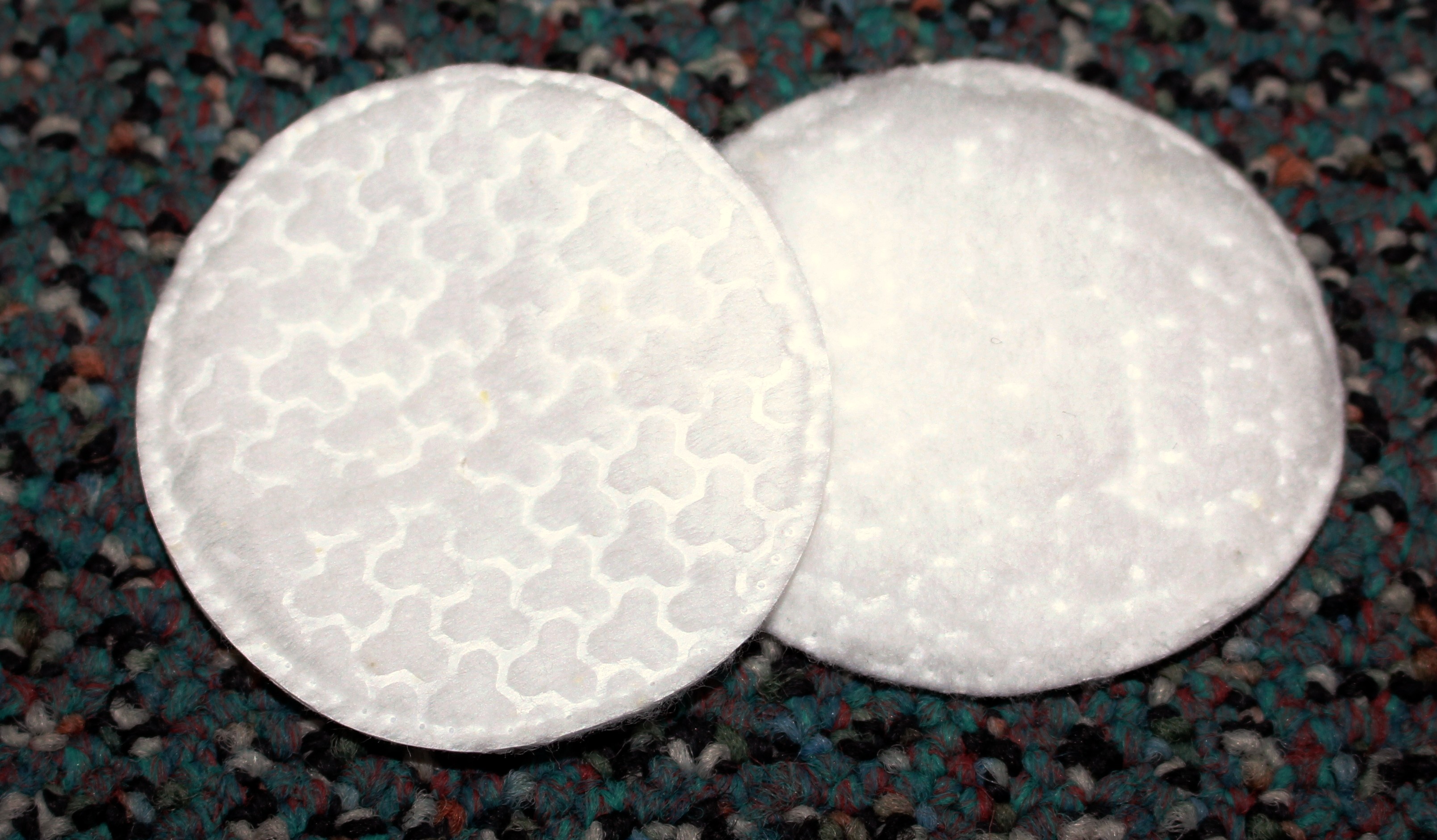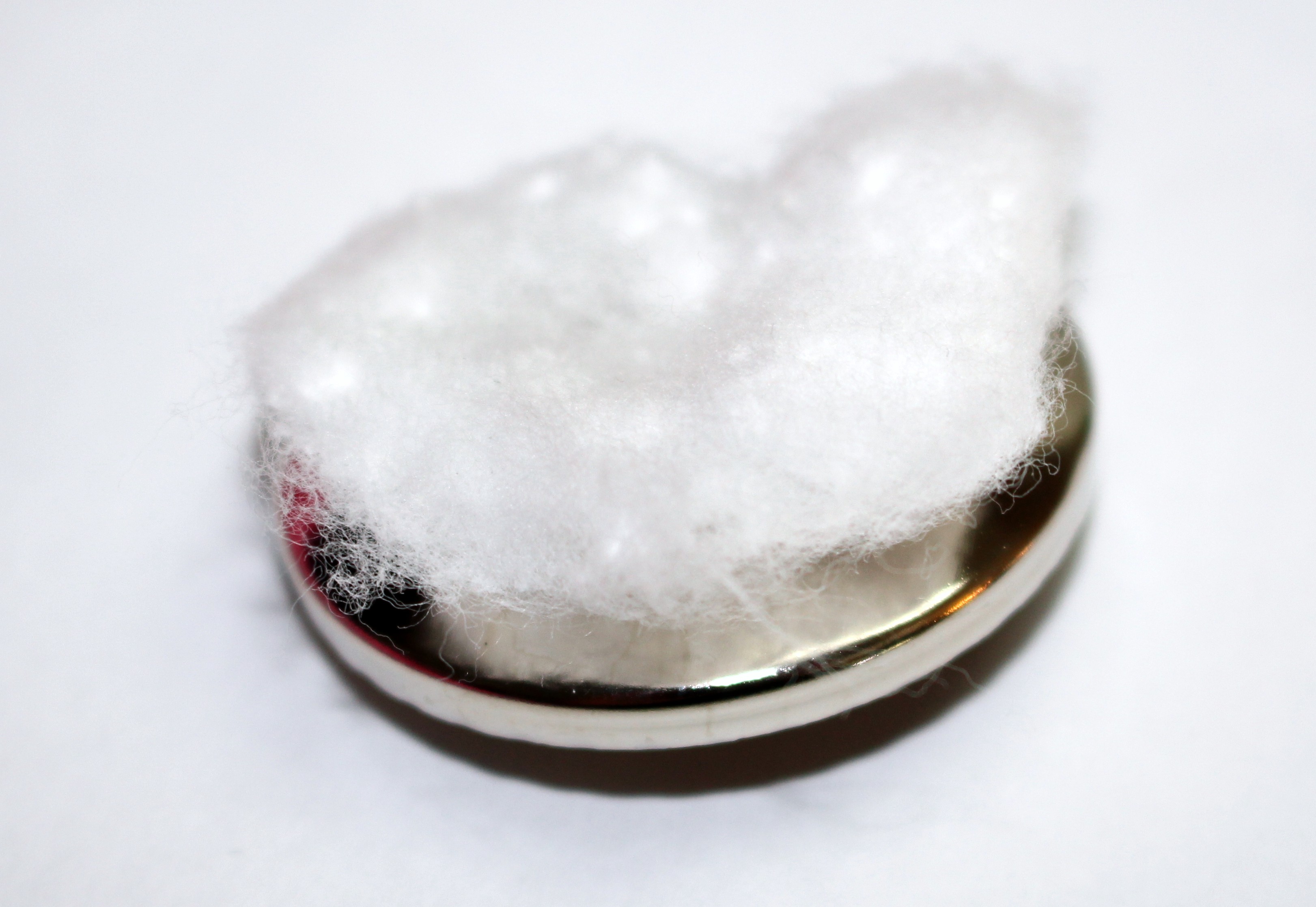All About Buttons!
Embellishing is one of my favorite things to do, in fact sometimes I even add touches to ready-to-wear garments. One of the easiest ways to restyle is to change the buttons. Even better, your own custom covered buttons! From simple to couture, this is what I will cover in the next series of blogs.
First, lets start with the basics on how to cover a button. The base of the button looks just like the ones above and they come in many sizes. There at two kinds available, I prefer the ones with what I call “teeth”, like this one from WAWAK.
Each button has 2 parts: a top that you will wrap your fabric around and a base that snaps onto the back, securing the fabric.
Let’s get started!
- Cut out a circle from your fashion fabric, just little bit bigger than the button.
Note: the circle above is too large for that button, it should look more like the photo below

3. Continue all the way around until the fabric is tight and secure.
See why I prefer the teeth, so much easier to tighten the fabric!
4. Place the backing on and snap into place with needle nose pliers. Snap all the way around the button to make sure the back is tightly closed.
Trouble Shooting: If you can’t snap the back of the button in place, you might have too much fabric inside. This means the circle of fabric was too large, but you can still trim out the excess fabric to make it work.
That’s it! Super easy and trend with a touch of couture 🙂
I have quite a few more buttons to go, but this jacket has been cut and sitting in my “to do” bin for over a year! Hand-dyed silk charmeuse lining and all, I must finish this before spring!
One more thing about covering buttons: A little trick that I do to make my buttons look more professional is to add a touch of cotton. You can use cotton balls, make-up remover cotton, batting, even a thin piece of polar fleece.
Center the cotton on the button, then wrap the fabric over the cotton. Now when you secure the fabric tightly you won’t see any metal through the fabric and it softens the look. Now when I want to add beading to the button I can actually get my needle through the fabric. If you have a hard time keeping the cotton in place, use a tab of super glue, just let the glue dry before covering with fabric.
Buying Covered Buttons:
There are so many covered buttons to choose from it can get a little overwhelming, so I have included links to the ones that I use from WAWAK Sewing:
These are all 12 packs, but trust me you will go through them. These buttons have a curved top, they also carry a flat top.
Next time I will show how I made these custom buttons:
Hope you had a great week! Off to work on samples for It’s Sew Easy TV taping next week.
Cheers,



















Thanks for the in-depth instructions. I have also made them into matching earrings. They can also be made into lapel pins on jackets & blouses
What a great idea!
Thank you for this. I have always been wanting to make covered buttons but have never gotten around to doing so. This post reminds me how beautiful they look. I must give them a try!
I love covered buttons. They look especially nice with bound buttonholes. Your pink jacket in the last picture looks gorgeous. I can’t wait to see it. Thanks for the tip on padding. I have never done that, but will next time.
I didn’t know you could do such a thing! I love this!! Thanks !
I love the look of covered buttons..the cotton pad is a wonderful tip!! Happy Sewing! -Terry
This is great to see, I love covering buttons, I remove the shank and glue them to ring blanks to make rings to match my outfits!
When you add the cotton batting or cotton wool though do you have it so it doesn’t wrap right round and over the teeth? I had a thin fabric recently so layered it over a plain white fabric but due to its thickness then I struggled to get the back on. I can’t quite tell how the batting goes on in your picture.
Thank you.
I just add some to the top, not into the teeth. For lighter fabric I use a thin piece of china silk to help cover, you don’t want to see the cotton either 🙂
Angela, can u elaborate on the china silk? Is it actually silk or the polyester that pops up on search engine? And when you say “thick” are you meaning double layer, or a thicker china silk? Thank you
Hi Alicia, first I meant to say thin – thanks for pointing that out 🙂 I am stalking about silk – but the words “habotai” and “china silk” refer to the same fabric.
For this application the poly china silk would work as well.